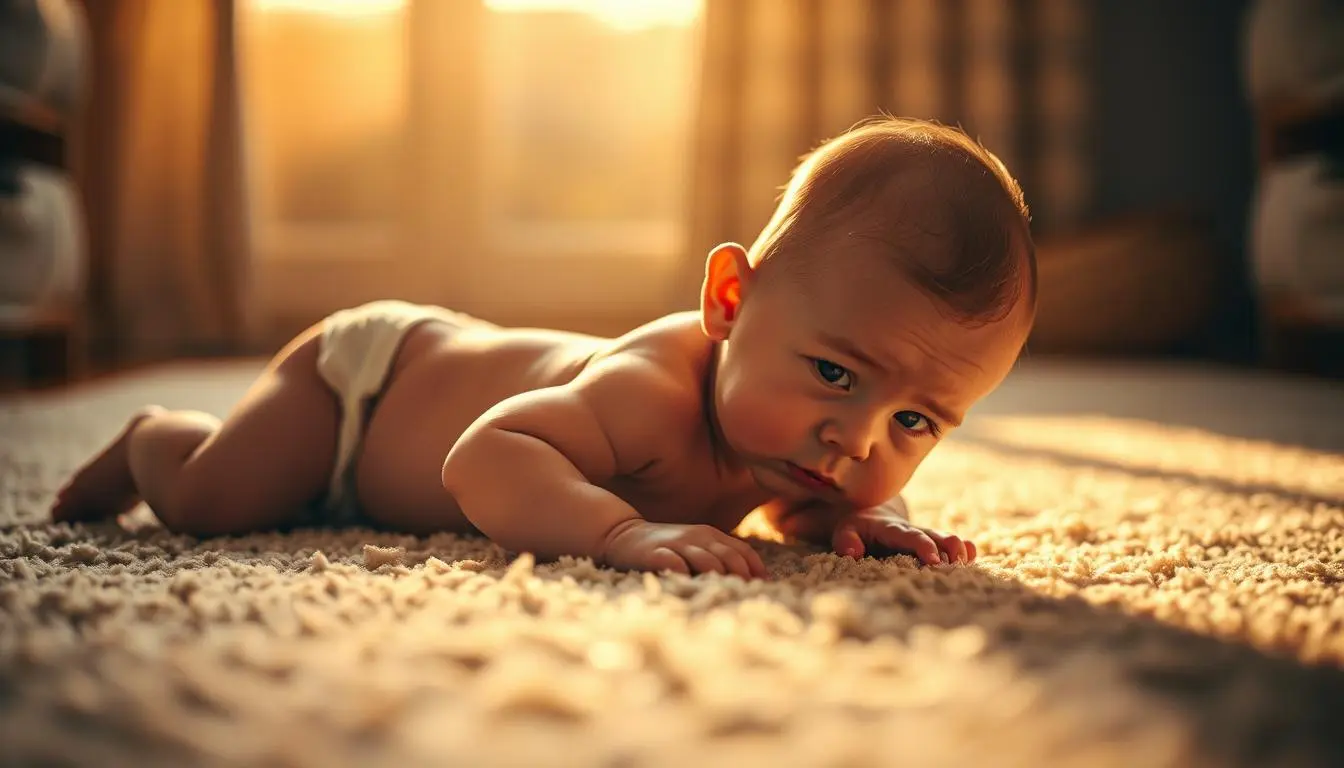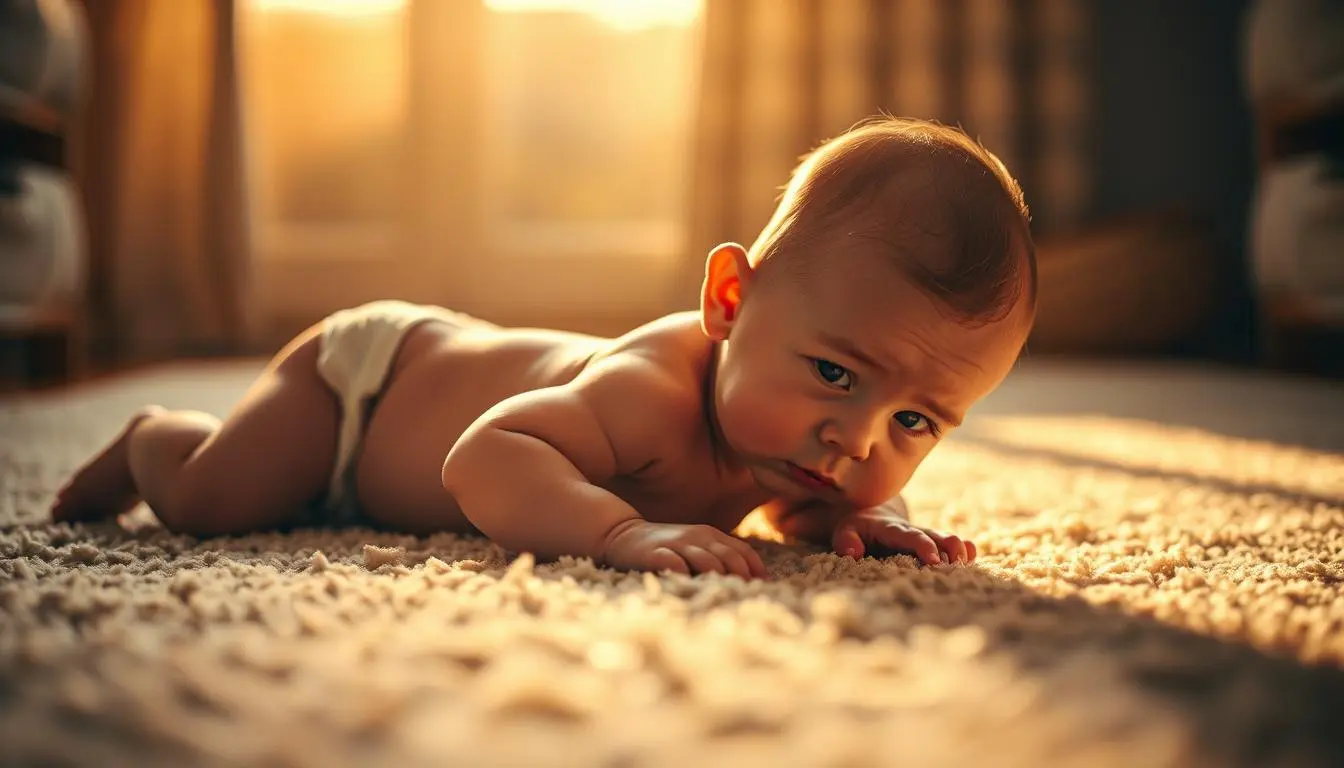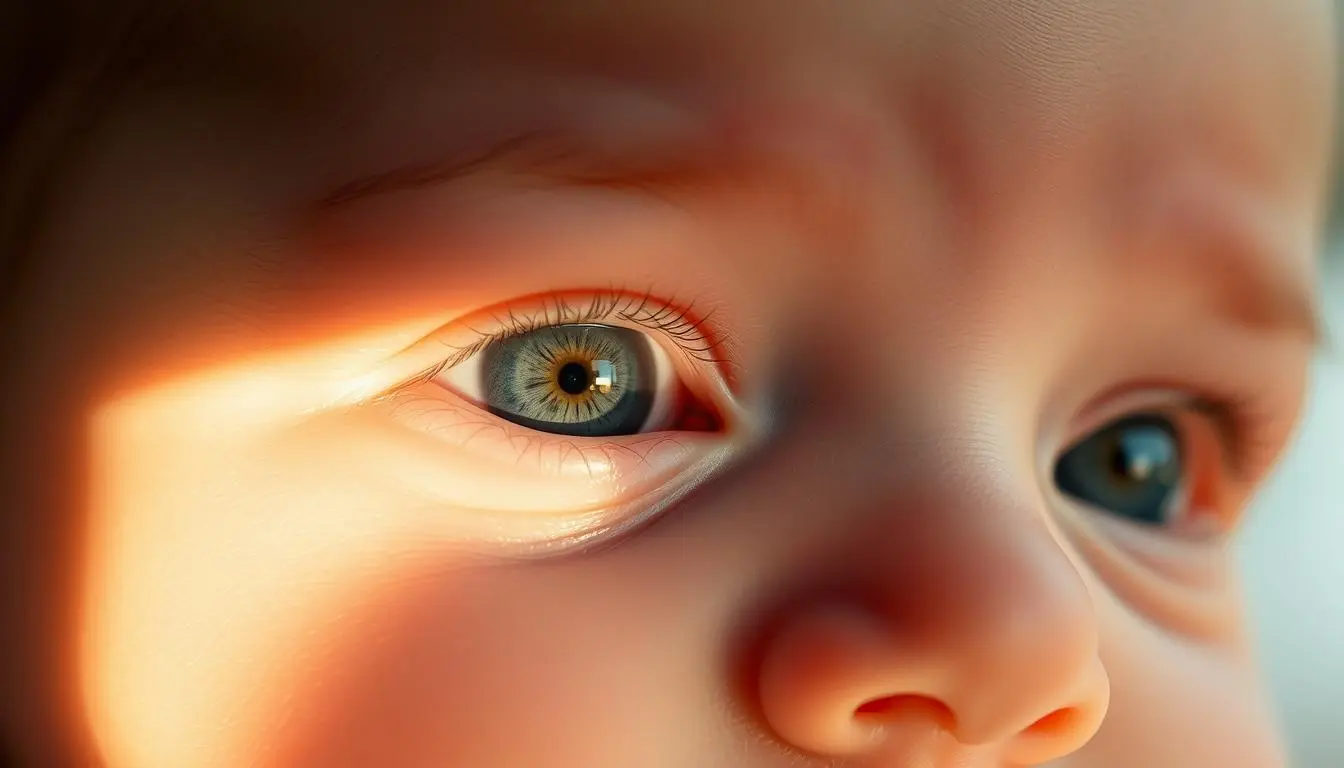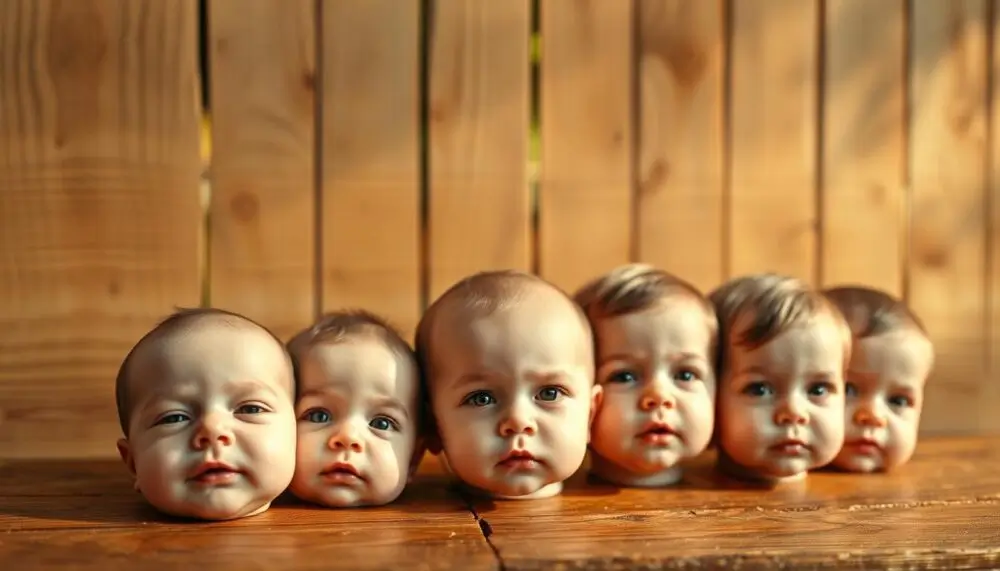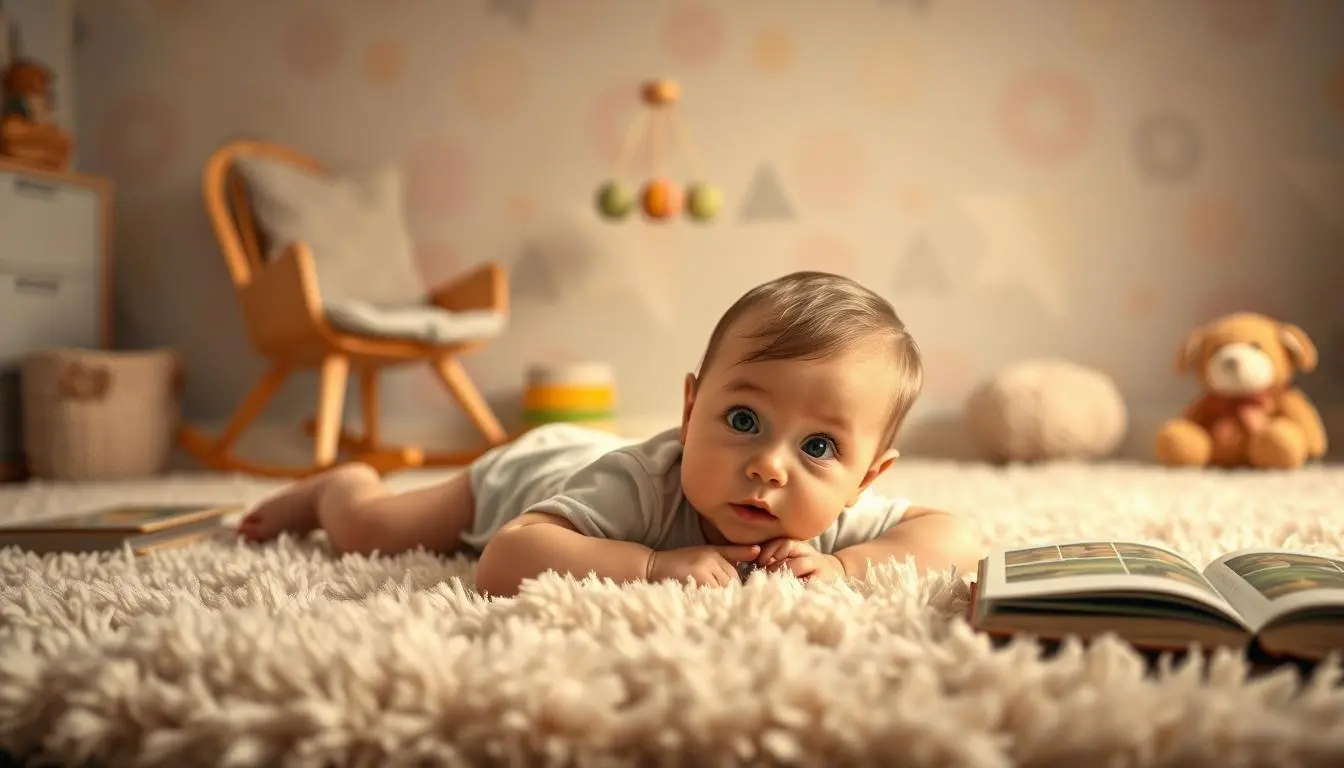Why Do Babies Fight Sleep? As parents, we often find ourselves puzzled by our baby’s resistance to sleep. It’s a common phenomenon that can leave caregivers feeling frustrated and concerned. Understanding the underlying reasons for this behavior is key to solving baby sleep problems effectively.
There are many factors that make a baby not want to sleep. These include being overtired, feeling uncomfortable, and being overstimulated. There can also be underlying medical issues. By looking into these reasons, we can better understand our baby’s behavior. This helps us find ways to improve their sleep habits.
Key Takeaways
- Understanding the reasons behind a baby’s resistance to sleep is key.
- Various factors contribute to baby sleep problems.
- Identifying the cause is the first step towards a solution.
- Establishing a bedtime routine can help.
- Creating a sleep-conducive environment is essential.
- Being aware of overtiredness and overstimulation can help mitigate sleep issues.
🌙 Help Your Baby Sleep Soundly – Shop Top Baby Sleep Products on Amazon
Getting your baby to sleep through the night is every parent’s dream. From comfortable sleeping gear to soothing sleep aids, baby sleep products are designed to create a safe and peaceful sleep environment, ensuring your little one (and you) get the rest you need.
🛏️ Crib mattresses, sleep sacks, and swaddles
🌙 White noise machines, night lights, and lullabies
🛌 Bassinets, pack n’ plays, and portable sleepers
👉 Shop baby sleep essentials on Amazon
✔️ Trusted brands like Halo, Graco, Fisher-Price, and Summer Infant
✔️ Safe, comfortable, and soothing solutions for babies
✔️ Fast delivery and helpful customer reviews
Make bedtime easier for your baby — and enjoy peaceful nights for your whole family. 🌟
The Science Behind Baby Sleep Patterns
Infant sleep habits come from biology and the environment. Knowing these factors helps create good sleep routines.
Normal Sleep Development in the First Year
In the first year, babies grow a lot, which changes their sleep. Sleep cycles evolve from short to long periods. By six months, many sleep all night, but it varies.
Recognizing Sleep Cues vs. Sleep Resistance
It’s important to know the difference between sleep cues and sleep resistance. Sleep cues, like yawning or rubbing eyes, mean a baby is sleepy. Sleep resistance, shown as fussing or crying, means a baby is tired but can’t sleep.
Reason1: The Overtiredness Paradox
Overtired babies often get more agitated instead of relaxing. This happens when they miss their best sleep time. It makes them very alert and awake.
Why Exhaustion Leads to Hyperactivity
Babies who are overtired make more stress hormones like adrenaline and cortisol. These hormones keep them awake and restless. This makes bedtime battles more common and intense.
Creating an Age-Appropriate Sleep Schedule
To prevent overtiredness, create a sleep schedule that fits your baby’s natural rhythm. Here are some tips:
- Look for sleepy signs like yawning, rubbing eyes, or being less active.
- Start a calming bedtime routine to signal it’s time to sleep.
- Make sure the sleep area is quiet, dark, and cool.
By understanding and meeting your baby’s needs, you can lower sleep resistance. This helps them sleep better.
Reason2: Sensory Overload or Understimulation
The environment around a baby can either help or hurt their sleep. Babies take in their world through their senses. An environment that’s too much or too little can mess with their sleep.
A balanced sensory experience is key for a baby’s growth and sleep. During the day, babies need a mix of activity and quiet. Too much activity can cause sensory overload, making it hard for them to sleep.
Balancing Daytime Stimulation for Better Sleep
To balance daytime activities, parents can switch between active play and quiet time. For instance, a morning of play followed by a quiet nap can help. It’s also important to watch for the baby’s cues to see if they’re feeling too much or too little.
| Activity Type | Examples | Benefits for Sleep |
|---|---|---|
| Active Play | Tummy time, sensory play, music | Regulates sensory experiences, promotes healthy development |
| Quiet Activities | Reading, storytelling, gentle rocking | Helps the baby relax, prepares for sleep |
Designing a Sleep-Promoting Environment
Creating a sleep-friendly environment is vital for babies to learn to sleep well. Make sure the room is dark, quiet, and comfy. White noise machines or a fan can block out distracting sounds.
“A dark, quiet room can significantly improve a baby’s sleep quality by reducing external stimuli.”
By balancing daytime activities and setting up a sleep-friendly space, parents can help their baby sleep better.
Reason3: Irregular Sleep Routines and Their Impact
It’s important for babies to have a regular sleep routine. This helps them develop good sleep habits. When sleep routines are irregular, it can confuse a baby’s internal clock. This makes it hard for them to tell day from night.
Irregular sleep can also make sleep quality poor. Babies who don’t have a set bedtime might find it hard to settle down. This can lead to waking up a lot at night. A regular sleep routine helps babies learn to calm down and get ready for sleep.
The Biological Clock of Infants
Infants are born with a natural clock that controls their sleep and wake times. But, this clock needs to match the outside world. Being exposed to natural light and darkness helps set their circadian rhythms. This affects their sleep patterns.
Having a regular sleep schedule helps sync the baby’s clock with day and night. It’s important to pay attention to our baby’s natural rhythms and adjust our routines to match.
Establishing Consistent Bedtime Rituals
Creating a calming bedtime routine is key. It tells the baby it’s time to sleep. Activities like bath time, reading, or singing lullabies are great for this. They help the baby move from being awake to sleepy.
| Bedtime Ritual | Benefits |
|---|---|
| Bath Time | Relaxes the baby, making them more receptive to sleep |
| Reading | Calms the mind and creates a soothing atmosphere |
| Lullabies | Creates a sense of security and helps in winding down |

Reason4: Why Do Babies Fight Sleep During Developmental Leaps
Babies may fight sleep when they’re learning new things fast. This time of quick growth is both thrilling and tough for them.
It’s not just tiredness or too much stimulation. Babies are actually learning and practicing new skills, even when they’re asleep.
Physical Milestones That Disrupt Sleep
Reaching physical milestones like rolling over or walking can mess up a baby’s sleep. They might be restless at night as they practice these new skills.
- Rolling over and adjusting to new sleeping positions
- Practicing sitting up or crawling in their sleep
- Mastering walking skills, which can lead to increased nighttime waking
Cognitive Development and Sleep Regression
Cognitive growth also plays a part in sleep issues during developmental leaps. As babies learn, their brains stay active, making it hard to sleep at night.
Key cognitive developments that can affect sleep include:
- Problem-solving skills
- Understanding cause-and-effect relationships
- Recognizing and responding to their environment
Reason5: Problematic Sleep Associations
Many parents face challenges with sleep associations. These are actions or conditions that help a baby fall asleep, like being rocked or fed. If these become too strong, they can mess up a baby’s sleep.
These habits start when parents try to calm their babies. But over time, babies might need these things to sleep. This can lead to bedtime battles if they’re not available.
Identifying Dependency-Creating Sleep Habits
First, we need to spot the habits that make babies dependent. These might include feeding them to sleep, rocking, or having them sleep in your arms. Knowing these habits helps us understand their impact on sleep.
Once we see these patterns, we can start to change them. This will help our babies sleep better without these habits.
Gentle Methods for Breaking Sleep Associations
Breaking these habits needs a gentle and slow approach. For example, if rocking is a habit, we can slowly do less of it. We can also introduce new, better habits, like a lovey or a white noise machine.
Using these methods helps babies learn to fall asleep on their own. This reduces bedtime battles and makes sleep time calmer.
Reason6: Hidden Discomfort and Medical Concerns
Babies often fight sleep because of hidden medical issues or physical discomfort. As caregivers, we must find and fix these problems to help our babies sleep well.
Hidden discomfort can come from many sources, like physical issues that are hard to see. We must know about these problems to care for our babies properly.
Physical Discomforts That Interrupt Sleep
Many physical discomforts can make babies fight sleep. These include:
- Ear infections, which cause pain and discomfort
- Reflux, leading to heartburn and discomfort
- Teething pain, which is very distressing
We can help our baby’s discomfort and improve their sleep by recognizing these issues. For example, using a humidifier or raising the crib head can help with congestion and reflux.
Medical Issues That Require Professional Attention
Some medical issues need a doctor’s help to solve sleep problems in babies. These include:
- Sleep apnea, a condition where a baby stops breathing for short periods
- Allergies, which can cause respiratory discomfort
If we think our baby’s sleep issues are due to a medical problem, we should see a doctor. They can diagnose and suggest treatments to fix the sleep problem’s cause.
Reason7: Environmental Sleep Disruptors
Creating a good sleep space is key for babies to sleep well. Things like temperature, noise, and light can affect a baby’s sleep. These factors can either help or hurt a baby’s ability to sleep.
Temperature, Noise, and Light Considerations
A baby’s sleep area needs to be just right. Temperature is very important; a room that’s too hot or cold can mess with sleep. The best room temperature for a baby is between 68-72°F (20-22°C).
Noise levels matter too. Some babies sleep better with white noise, while others like it quiet. Light can also affect a baby’s sleep cycle, with darkness helping to produce melatonin.
- Maintain a comfortable room temperature.
- Consider using white noise machines or ensure a quiet environment.
- Keep the room dark to promote melatonin production.
Creating the Optimal Sleep Space
To make a great sleep space, think about the room’s feel. Make sure the crib is safe and comfy, with a firm mattress and tight sheets. Try to remove distractions and keep the room dark, quiet, or filled with calming sounds.

By focusing on these details, parents can make a sleep-friendly space for their babies.
Reason8: Emotional Needs and Separation Anxiety
Baby sleep is complex, and emotional needs and separation anxiety are key factors. Babies are very connected to their caregivers. Their emotional state affects their sleep. Feeling secure with their caregivers helps them sleep better.
Separation anxiety starts around 6 months. It makes babies upset when they’re away from their main caregivers. This anxiety can make it hard for them to fall asleep.
Understanding Attachment and Sleep Resistance
Attachment theory shows how a child’s bond with their caregiver affects their emotions and growth. A secure attachment helps babies explore and sleep well. But, an insecure attachment can make it hard for them to relax without their caregiver.
Knowing about attachment is key to solving sleep problems linked to emotional needs and separation anxiety.
Balancing Emotional Security with Sleep Independence
It’s important to balance giving emotional security with teaching sleep independence. A consistent bedtime routine with reassuring moments helps. Also, giving babies chances to soothe themselves at bedtime is good.
A table below shows how to balance emotional security with sleep independence:
| Strategy | Description | Benefit |
|---|---|---|
| Consistent Bedtime Routine | Establish a calming and predictable bedtime routine. | Enhances emotional security and prepares the baby for sleep. |
| Gradual Withdrawal of Parental Presence | Gradually reduce the level of parental involvement at bedtime. | Encourages sleep independence and self-soothing. |
| Creating a Sleep-Conducive Environment | Ensure the sleep environment is dark, quiet, and at a comfortable temperature. | Promotes better sleep quality. |
Conclusion: Nurturing Healthy Sleep Habits
Understanding why babies fight sleep is key to solving sleep issues. We’ve looked at eight surprising reasons, like being overtired and sensory overload. We’ve also talked about developmental leaps and emotional needs. Knowing these reasons helps us support healthy sleep habits in our babies.
Creating a sleep-friendly environment is vital. This means keeping the room at a comfortable temperature, reducing noise, and making sure it’s dark. A consistent bedtime routine also tells our baby it’s time to sleep. This helps them develop good sleep habits and fight less against sleep.
As we tackle why babies fight sleep, patience and flexibility are essential. Every baby is unique, and what works for one might not work for another. By paying close attention to our baby’s needs and adjusting our approach, we can help them develop healthy sleep habits for life.
FAQ
Why do babies fight sleep?
Babies fight sleep for many reasons. These include being overtired, too much stimulation, and irregular sleep times. They might also be going through big changes, have sleep habits that aren’t good, or be uncomfortable. Plus, their environment and emotional needs can play a part.
How can we establish a bedtime routine that works for our baby?
To set up a bedtime routine, start with a sleep schedule that fits their age. Make sure they get the right amount of daytime activity. Create a cozy sleep area and stick to bedtime rituals. This helps them know it’s time to sleep.
What are some common sleep associations that can be problematic?
Sleep associations like needing to be rocked or fed to sleep can be a problem. We offer gentle ways to break these habits. This helps your baby sleep better on their own.
How can we create a sleep-friendly environment for our baby?
For a sleep-friendly space, think about the temperature, noise, and light. Make sure it’s always the same. This helps your baby relax and sleep better.
What role do emotional needs play in our baby’s sleep?
Emotional needs and feeling scared can affect sleep. We talk about how to keep your baby feeling safe while also teaching them to sleep alone. This helps them sleep better.
How can we address sleep resistance in our baby?
To tackle sleep resistance, first figure out why they’re resisting sleep. It might be because they’re too tired or overwhelmed. Then, use a consistent bedtime routine and make their sleep area cozy. This helps them sleep better.
What are some signs that our baby’s sleep issues may be related to an underlying medical concern?
Look out for signs like ear infections or reflux that can mess with sleep. If you think there’s a medical problem, get professional help right away.
How can we help our baby develop healthy sleep habits?
To help your baby sleep well, start with a bedtime routine and a cozy sleep area. Use relaxation techniques to help them wind down. This encourages healthy sleep habits.

